South Dakota
Geography
South Dakota is located in the Midwestern region of the United StatesMidwestern region. It is the 17th largest by area, but the 5th least populous, and the 5th least densely populated of the 50 United States50 United States[1].
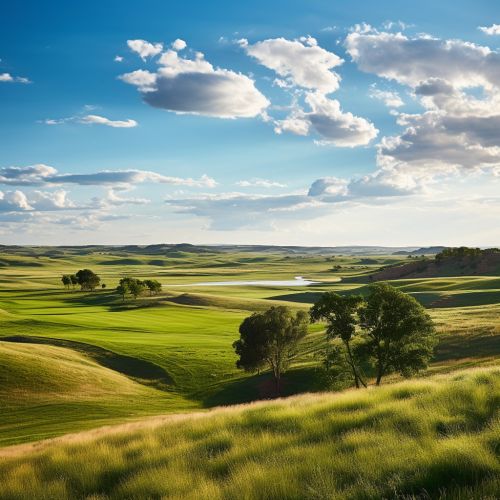
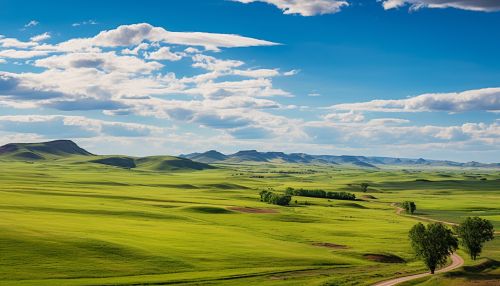
The eastern half of South Dakota, often referred to as East River, is dominated by its agricultural landscape. The James RiverJames River flows through this part of the state, providing a significant source of water for the region's farming industry[2].
The western half, known as West River, is home to most of the state's natural resources and tourist attractions, including the Black HillsBlack Hills, Mount RushmoreMount Rushmore, and the BadlandsBadlands[3].
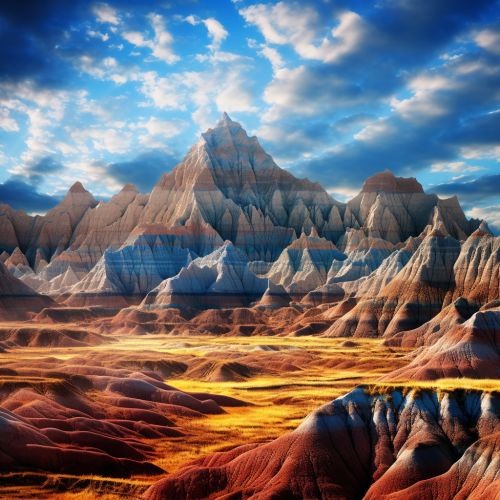
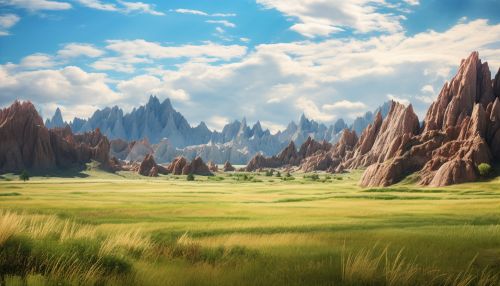
Climate
South Dakota has a continental climate with four distinct seasons, ranging from cold, dry winters to hot, semi-humid summers. The state's eastern half tends to have more precipitation and lower high temperatures than the western half[4].
Economy
South Dakota's economy is dominated by the sectors of service, agriculture, mining, and manufacturing. The state is a major producer of a variety of agricultural products, including corn, soybeans, wheat, and cattle[5].
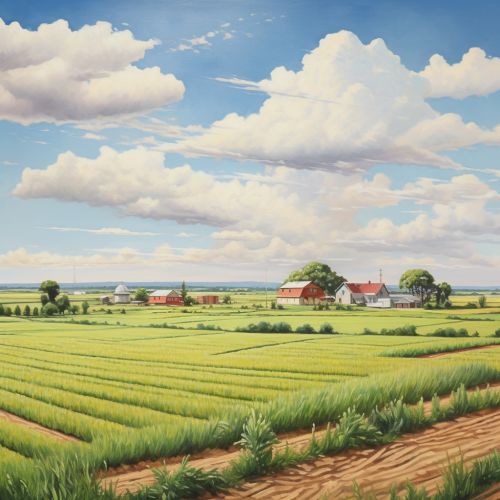
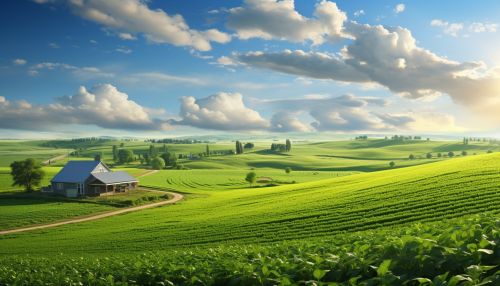
In addition to agriculture, South Dakota has a significant mining industry, primarily focusing on gold and granite. The Homestake MineHomestake Mine, located in Lead, was once the largest and deepest gold mine in North America[6].
History
The area that is now South Dakota was originally inhabited by Native American tribes, including the Dakota, Lakota, and Nakota tribes of the Sioux NationSioux Nation[7].
The first European contact was made in 1743 by the La Vérendrye brothers from France, who left an inscribed lead plate near the site of modern-day Pierre[8].
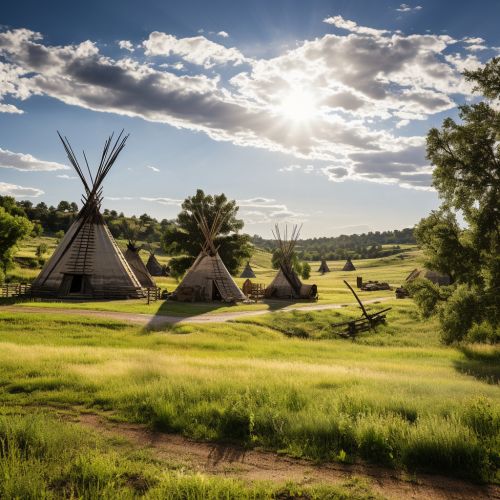
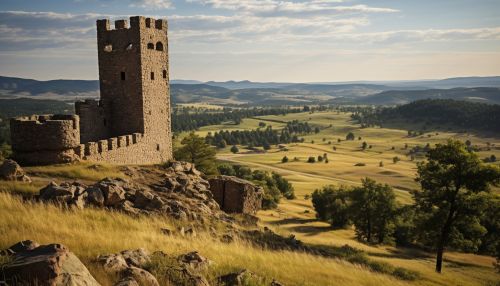
South Dakota became a state on November 2, 1889, along with North Dakota. The two states were admitted to the Union on the same day due to a rivalry and ongoing dispute over which state should be admitted first[9].
Demographics
As of 2020, the U.S. Census Bureau estimated the population of South Dakota to be approximately 886,667[10]. The largest city in the state is Sioux Falls, with a population of over 180,000[11].
Government and Politics
South Dakota is a republic with three branches of government: executive, legislative, and judicial. The governor of South Dakota is the head of the executive branch[12].
The state has a bicameral legislature, consisting of the Senate and the House of Representatives. The judicial branch is headed by the South Dakota Supreme Court[13].
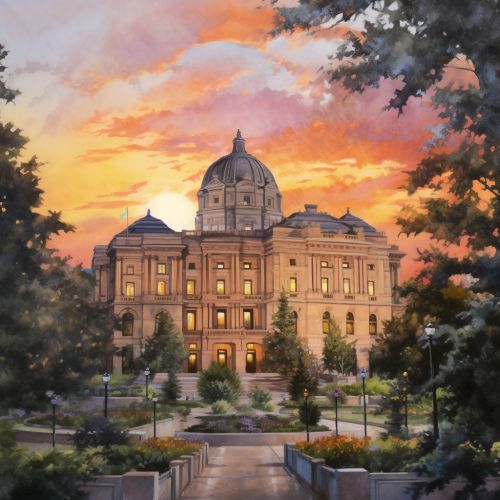
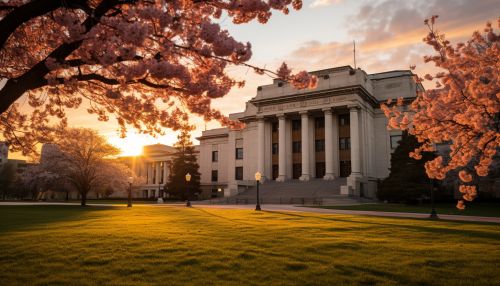
Education
South Dakota has a mix of public and private colleges and universities. The largest institution is the University of South Dakota, located in Vermillion[14].
Culture
South Dakota's culture is a blend of its Native American heritage and its rural character. The state is known for its outdoor recreational activities, such as hunting, fishing, and hiking[15].
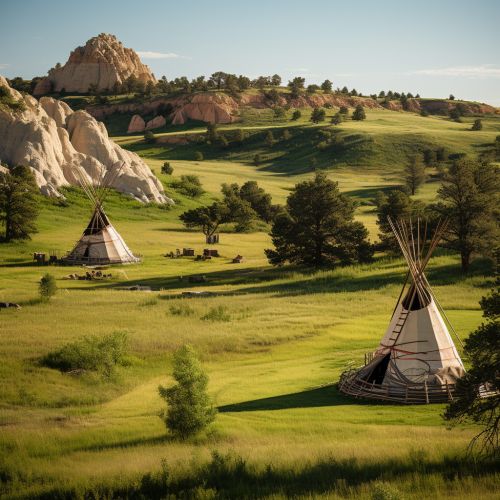
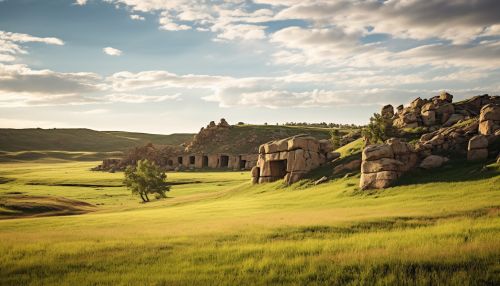
See Also
References
- ↑ https://www.census.gov/quickfacts/SD
- ↑ https://www.britannica.com/place/South-Dakota
- ↑ https://www.travelsouthdakota.com/explore-with-us/great-8
- ↑ https://www.britannica.com/place/South-Dakota
- ↑ https://www.ers.usda.gov/topics/farm-economy/state-fact-sheets/south-dakota/
- ↑ https://www.britannica.com/place/South-Dakota
- ↑ https://www.sdtribalrelations.com/tribes.aspx
- ↑ https://www.history.com/topics/us-states/south-dakota
- ↑ https://www.history.com/topics/us-states/south-dakota
- ↑ https://www.census.gov/quickfacts/SD
- ↑ https://www.census.gov/quickfacts/fact/table/siouxfallscitysouthdakota/PST045219
- ↑ https://sd.gov/governor/
- ↑ https://ujs.sd.gov/Supreme_Court/default.aspx
- ↑ https://www.usd.edu/
- ↑ https://www.travelsouthdakota.com/things-to-do/outdoor-adventure
